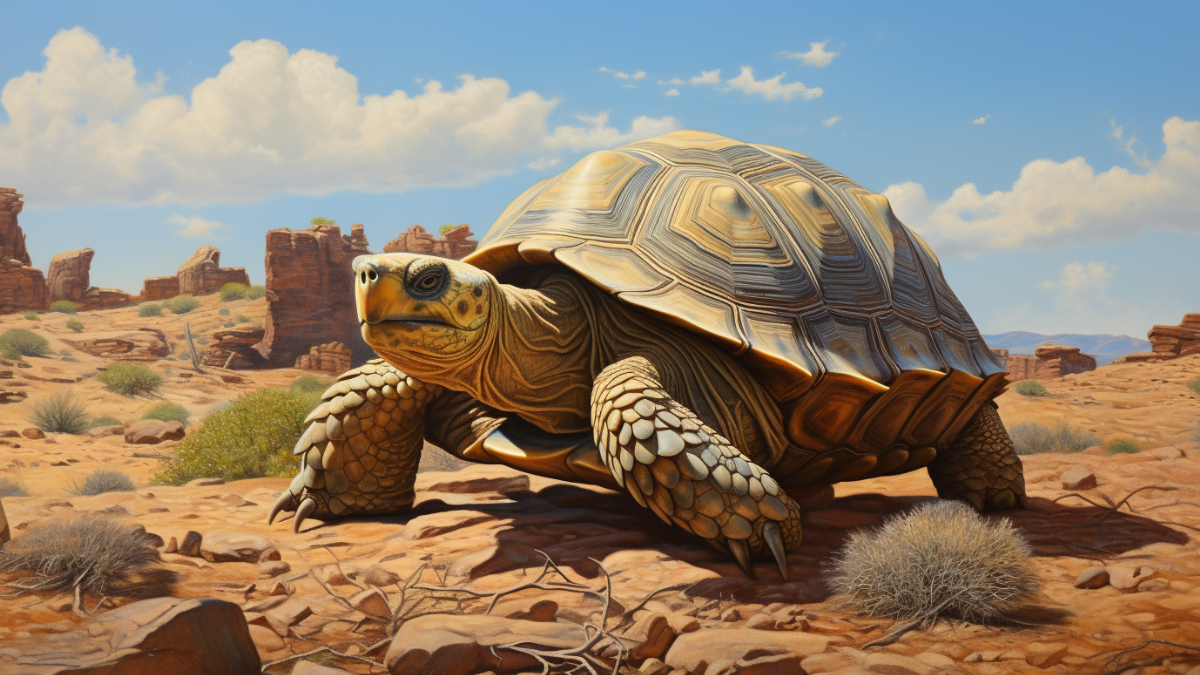Types of Desert Tortoise: The 3 Common Species
Desert tortoises are usually terrestrial reptiles that inhabit various deserts in Mexico and the United States. These tortoises are adapted to surviving in these arid areas and are best known for conserving water.
But how many types of desert tortoises are there? There are usually three types of desert tortoises: G. agassiz, G. morafka, and G. evgoodei. These tortoises vary in color, shell appearance, habitats, and range, with some overlapping others. The three types are listed under the threatened conservation status.
Read on to learn more about these three types of desert tortoises, including their diet, range, and habitat.
Types of Desert Tortoise Overview
Contents
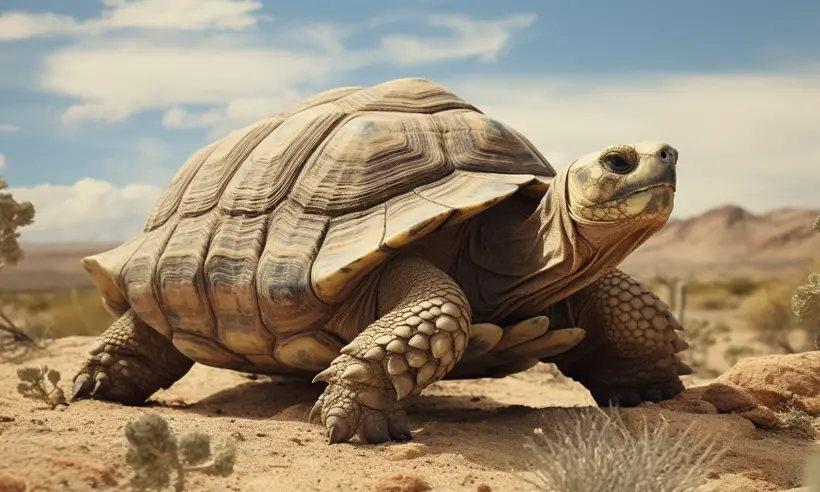
The following table provides an overview of the desert tortoises.
| Factors | Mojave Desert tortoise (Gopherus agassizii) | Sonoran Desert Tortoise (Gopherus morafkai) | Goode’s Thornscrub Tortoise (Gopherus evgoodei) |
|---|---|---|---|
| Alias | Mojave Desert Tortoise | Sonoran Desert Tortoise | Sinaloan Thornscrub Tortoise |
| Size | 3 inches/15 inches | 2 inches/14 inches | 2.5 inches |
| Color | Brown or gray | Brown to dark brown | Yellow or orange |
| Weight | 8 – 15 pounds | 8 – 15 pounds | 8 – 14 pounds |
| Lifespan | 50 – 80 years | 30 – 50 years | 30 – 50 years |
| Carapace | High domed | Wider and flatter. More pear-shaped | Flatter and more square shell |
| Habitat | Bush scrubs and desert scrub | Rocky canyons, hillsides, and bush flats | Hills, slopes, rock outcrops, and thorn scrubs |
| Diet | Grasses, plants, and flowers | Grasses, herbs, and cacti | Grasses, cacti, and plants |
| Status | Threatened | Threatened | Vulnerable |
| Range | California, Arizona, and Nevada | California, Arizona, Nevada, and Mexico | Sinaloa Mexico |
Common Types of Desert Tortoise
Before 2011, scientists knew only one species of desert tortoise existed, namely Gopherus Agassizii. However, after researching further, they noticed a behavioral difference with the tortoises on the east and west.
DNA evidence also confirmed the difference between some tortoises in the group and decided to split it. They named the new species Gopherus Morafkai in honor of David Joseph Morafka.
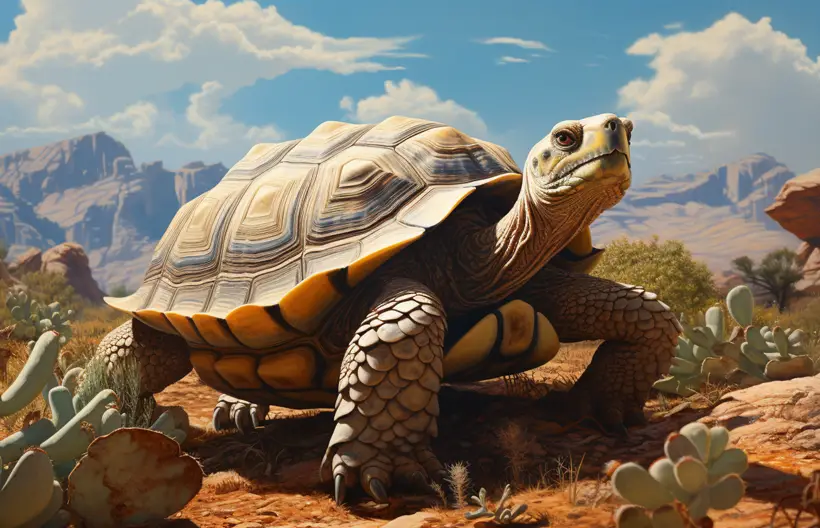
In 2016, further genetic, ecological, and morphological data analysis showed more differences within the group. Scientists and researchers noticed differences in the Gopherus genus in the south. A new genus, Goode’s Thornscrub tortoise, was formed, making the species three, which we’ve discussed below.
1. Mojave Desert tortoise (Gopherus agassizii)
Mojave Desert tortoise is the earliest identified species of the desert tortoise, discovered in 1863 by James G. Cooper. The species occur in California and Nevada in the Mojave desert. The tortoise inhabits bushes and shrubs in these desert areas.
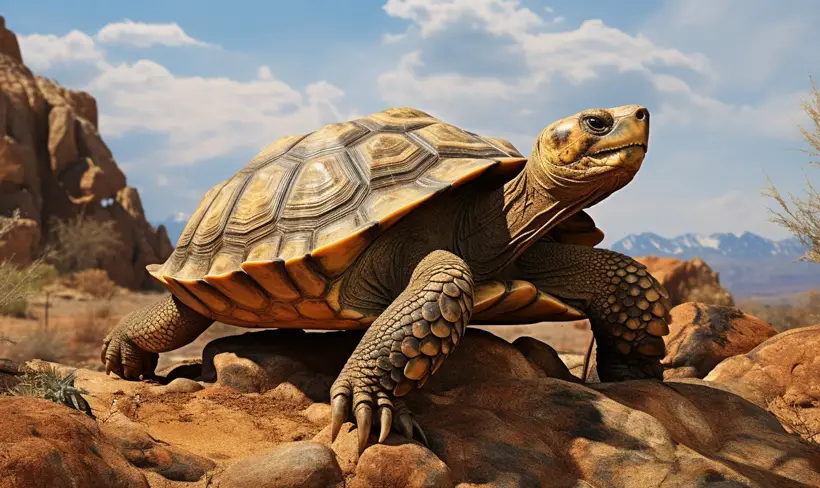
The tortoise is known to dig burrows to keep away from the desert heat and hibernate during the winter months. They are active in spring and autumn, which is when they mate and feed.
Their shell is usually more domed than other types of desert tortoises and also have more distinct growth rings. They are usually brown or gray but can be orange-brown or dark gray. Like other types, the underside has a lighter color that can be tan or yellow.
They mature after 16 years with an average growth of 8mm per year, growing up to 15 inches as adults. They can live up to 80 years, accumulating a weight of up to 15 pounds.
Below is an interesting video providing an overview of the Gopherus Agassizii.
2. Sonoran Desert Tortoise (Gopherus morafkai)
Gopherus morafkai is a species of desert tortoise that occurs in the eastern parts of the Colorado River. They are also found in Nevada, California, Mexico, especially the Sonoran desert. These tortoises spend most of their time in burrows that they dig with their strong forelimbs.
The G. morafkai tortoises differ from the Agassizii in the shell color and shape. The shell is flatter and narrower, with short gular scutes, and their carapace is pear-shaped. The shell color ranges from brown to dark brown.
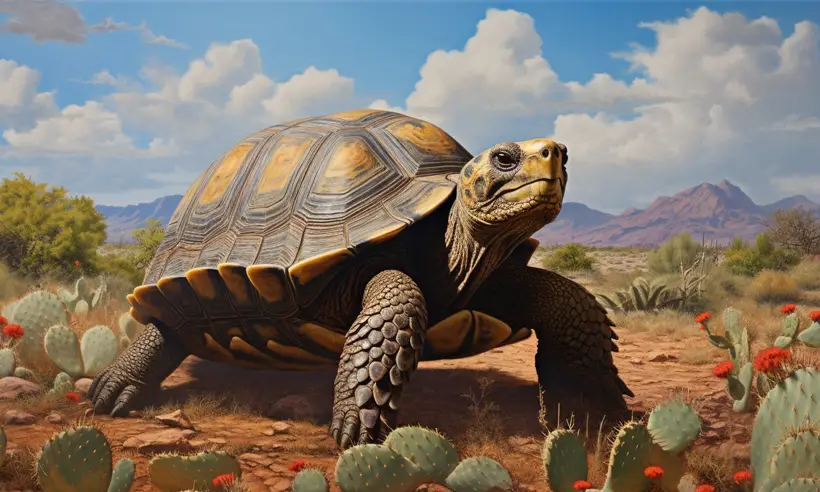
The Sonoran desert tortoises are active from March to late October, a time when they forage and breed. They hibernate through the winter months, from November to March.
3. Goode’s Thornscrub Tortoise (Gopherus evgoodei)
Goode’s tortoise, also known as the Sinaloan thorn scrub tortoise, is a desert tortoise popular in Mexico. They are also called Gopherus evgoodei, named for Eric V Goode, who founded Turtle Conservancy.
They occur in low mountains in Sonora and Sinaloa, Mexico, taking shelter in hillsides and outcrops. They are also great diggers, like the other tortoises of the genus Gopherus.
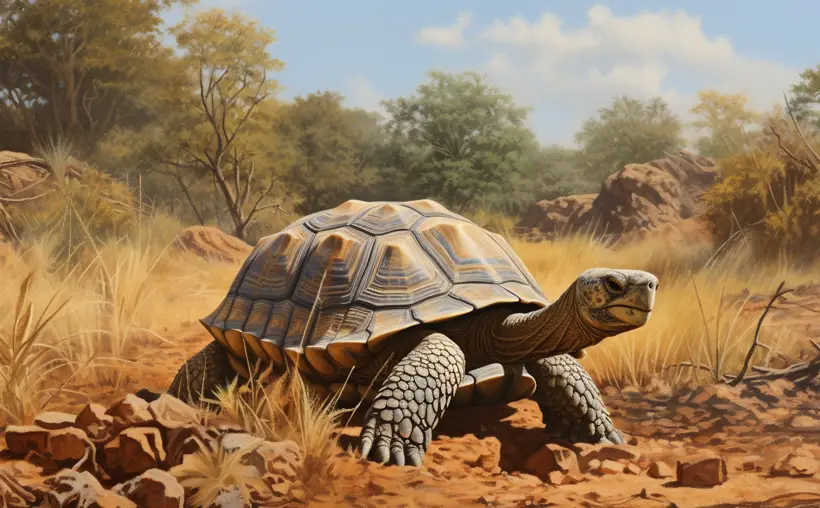
Compared to morafkai and agassizii tortoises, Goodes has a flatter shell and more rounded foot pads. They also have an orange tone in their skin and shell, which is also square.
These tortoises are active from June to November, just before winter when they hibernate. During this time, they forage on various plants, cacti, and grasses in the desert environment.
General Facts About Desert Tortoises
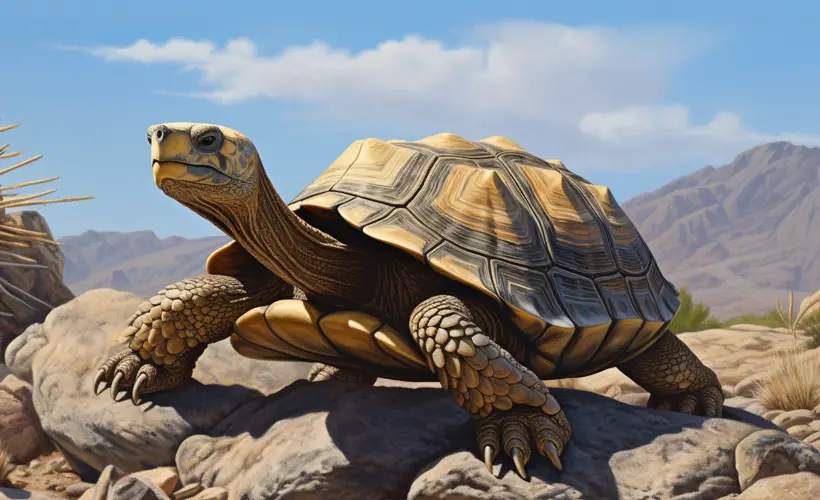
The following section lists some facts about the three types of desert tortoises.
- The tortoises spend over 90% of their time under shade to keep away from the desert environment.
- They are herbivores, eating various plant types, including flowers, grasses, and cacti.
- They are ectotherm animals and rely on the sun to heat and keep their bodies warm.
- Desert tortoises are also known for their ability to store water, which they do in their bladder. They also resist urinating so as not to lose water and remain hydrated.
- Desert tortoises are listed as threatened under and protected under the Endangered Species Act. Habitat fragmentation, diseases, and predation are the main contributing factors to their conservation status.
Related Questions
Following are some informative questions and answers related to the topic of desert tortoises.
Desert tortoises are usually easy to identify by their domed shell and strong forelimbs adapted to digging. They also have short tails, and their back legs are elephant-like. They mainly occur in desert and arid areas during spring.
Desert tortoises drink water but can go for a long time without hydrating. This adaptation is due to the desert environment where water is scarce. However, they get water from the plants they eat and also from their bladder.
Desert tortoises can be domesticated, though various legal guidelines must be followed. For instance, domesticated desert tortoises cannot be released back into the wild as they can die. However, the person adopting one must follow the various adoption programs.
Outro
In a nutshell, you’ll find three types of desert tortoises found in southwest parts of the United States and Northern parts of Mexico. The three types include G. agassiz, G. morafka, and G. evgoodei. These tortoises are under the genus Gopherus and occur mostly in desert and arid areas.
To differentiate them, check their skin and shell colors and shell’s shape. However, their diet, weight, and size are usually within the same range. Also, they are all listed as threatened species under the conservation status. Therefore, learn what you can do to prevent their extinction.

